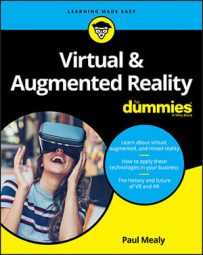Neither technology has advanced far enough to be considered “mature,” but VR has made large strides over the past few years. VR has seen the release of a large number of headsets for mass consumption, from low-cost devices powered by users’ mobile devices to high-end headsets that require a large amount of external computing power. VR has reached a decent consumer install base, VR consumer software is easy to come by, and we’re rapidly approaching what could be considered the second generation of consumer-based VR headsets.
AR, on the other hand, is still fairly new technology. AR headsets exist, but they are all fairly expensive, are limited in number, and generally focus on release for developers or enterprise rather than for mass consumption. VR’s form factor appears to be generally set, but how AR will be experienced isn’t quite settled yet.
AR does have a unique option: Both Apple and Google have released technologies (ARKit and ARCore, respectively) that allow consumers to experience smaller, mobile-device AR experiences. These technologies allow users to view the real world via their mobile-device cameras and augment those cameras’ video with digital holograms. Device restrictions such as the small video window and having to hold the device make mobile-based AR a less than optimal experience, but it’s a good introduction for most users as to just what AR is.

